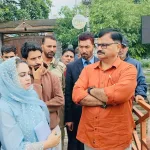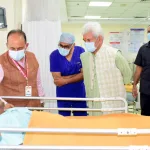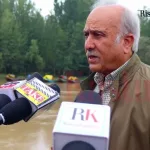Mughal Empire is recorded as one of the major empires of the medieval ages which ruled the then Hindustan from 16th century up to early 19th century for almost two hundred years. This grand empire extended from Kabul and had spread up to frontier of Bengal, annexing almost all the states of India. During the reign of Jala Ud Din Mohammad Akbar it annexed the lands of Gujarat, Malwa and Kashmir and made these states as the part of its empire. I am not here to discuss the history of this period as much has already been said and written about this period and history books are carrying ample information about this period. But I would here like to discuss certain important factors about the coinage and currency of this empire, about which we people are not so aware. These factors included the Mughal numismatic technology, typology, denominations, weight standards, metals and legends.
Zahir Ud din Babar and Hamayun where the first emperors of this dynasty, who issued their coins in gold, silver and copper. In gold and silver they followed the pattern of their ancestors and issued Shahrukhi type coins both in silver and gold on the pattern as issued by Shah Rukh in Afghanistan; its weight was 72 grains or (4 gm) carrying on obverse Kalima in a simple circle or an ornamented one, with margins filled with names of four Caliphs with their epithets, like Ba-Sidiqui Abu Bakar, Ba-Adli-Umar, Ba-Hayayi Usman, Ba-Elmi Ali and the reverse depicts the emperor’s name with its epithet and mint name as Al Sultan Alazam Wa Al Khakan Al-Mukram (date) Zahir-ud-din Muhammad Barbar. BadshahiGazi Khaldullah Mulkah Wa Sultanate Zarbi (the mint name).
Babar had no gold coin for his empire, but he had issued several in Samarkand and Budakshan. Hamayun is recorded to have issued gold coins in India. Their silver coins also bear the same legend as in gold coins. But certain, minor changes can be noted in silver issues. One of the silver coins of Hamayun issued from Agra mint, in the margin of Kalima side also carries this Ayet, ‘Allahu Yarzaqu Mon Yasha-u-Bigaril Hissab’ which means Allah to whom vows blesses with countless money. The copper coins of these emperors followed the Delhi pattern of Lodhi dynasty with its calligraphy style as well. On one side the mint name Zarbi, Agra, sometimes with its epithet; the reverse carried the date like Fi- Tarik Sanah in Arabic. Some of the Hamayun coins show the date in words like `Nohsad Chal Wa’, such copper coins of these emperors averagely weight about 10.5 gms.
Jallal ud Din Mohammad Akbar after ascending the throne of Mughal Empire required a well-established currency system for the growing economy of his empire. For this purpose he initiated a universal money market and issued coins in all the three meals viz. gold, silver and copper. To fulfill the currency needs of his country, he also established a large number of mints in his empire that extended from Kabul to the frontier of Bengal. Akbar for his universal series of coins followed the Delhi standard established there by Shershah Suri. He issued rupee in silver of 11.5 grams in various denominations, Mohur in gold’s of 10.8 grams in various denominations and Dam in copper of 21 grams, for undertaking the lower transactions of trade. Besides Mohur, in gold, Akbar had also issued Lalli Jail and Ganj Muhar. Abdul Fazal in his `Ani Akbari, has provided very brief but interesting description and value of Akbar’s coins, the following table is extracted from his description:
Mohur = weight 169 to 170Grains = 9 silver Rupees = 360 copper dams2. Lali Jail = Weight 187 grains= 10 silver Rupees = 400 copper dams Ganj Muhar = 12 silver rupees.
Akbar issued his coins in various shapes and in several types. His square, circular and octagonal shape coins are known from his number of mints. In his early years of his reign he continued to follow his ancestors while issuing a few Shahrukhi type coins in broad fabric, placing Kalima in obverse and his name with due titles on the reverse of his coins. Such coins are known mostly from Lahour, Kabul and Agra mints. Akbar in his earlier periods followed the local coins. Like in Kashmir, Akbar initially followed the Kashmir Sultanate type coin which was quite different from the Delhi standard. He issued sansu in silver and panchi in copper with the title Al Sultan al Azam, which was the standard coinage of kashmeri Sultans. Similarly in Gujrat and Malwa, he initially followed their local coin types, as his local coin types are also known from Gujrat and Malwa sultanate.
Akbar after consolidating his empire dismissed his Shahrukhi and local type issues and established his money market on Delhi standard in dummy fabric and issued his coins in gold and silver. On the obverse of his coins he placed the Kalima in the centre and filled margins with Caliphs names with their due epithets’ viz. Basaadiq Ibu Bakr, Ba Adali Aumar,Ba Alim Ali, Ba Haiaya Usman. On the reverse of his these coins he placed his name with due titles viz Jalal-ud-Din Muhammad Akbar Badshahi Gazi, Khalid-ullah Muluka, and mint name on the reverse. During his early 28 years of rule he placed date in Hijra era, but in the year AH 992, which was his 29th regional year, he dropped Hijra era from his coins. He then invented a new era on his coins know as Illahi era based on Persian months and reckoned from his accession to Delhi throne e.g. his 30th regional year was dated on his coins as 30th illahi Jala-Jallahu. He has invented this era and placed on his coins to propagate his new thought of Deen-i-Iallhi. But when this new era was introduced the Kalima and caliphs names were then dropped from his coins and a new legend for his coin was adopted e.g. Allah-o-Akbar, which meant God is great. Akbar’s coins are known from his number of mints. In fact few of his famous mints include Lahore, Delhi, Agra, Ahmedabad, Kashmir, Patna, Ujjan, Burhanpur, Fatafur, Ahmadnagar, Allahabad, Bengal, Kabul, Surat, Kalpi, Bahkar, Firozpur, Khandhar, Akbar Nagar, Dugaom, Urdu Zafarkri Awadh, Alwar, Devwal Bandur, Srinagar, Shergash, Sitpur etc.
Mughals here in Kashmir also issued coins in all the three metals, copper, silver and gold. Akbar’s gold Mohur is also reported from Kashmir. It is Kalima type and on the one side of the coin is depicted Kalima while on the other side of the same coin the legend reads name of its issuer, as Jalal-ud-Din Muhammad Akbar Badshah Gazi and on its margins the names of four Caliphs with their respective titles with mint name as Zarbi Kashmir. Several coins of Jahangir are also known from Kashmir mint. One of the coins of Jahangir carried the name of his beloved wife Noor Jahan in a couplet form, which reads:
Zi Hukum Shahi Jahangir Yafat Sad Zav; Banamay Noor Jahan Badshah Begum Zar.
Mughal emperors are known to have made Kashmir their permanent mint and almost all of the royal Mughal Emperors from Akbar to Shah Alam have struck their coins from this mint with mint name Zarbi Kashmir. The numismatic heritage of the Mughal emperor’s needs to be rediscovered, locally very few people are aware of their rich numismatic heritages. The students pursuing their degrees in archaeology and history also know very little about this heritage. The respective archaeology and history department of the universities should bring certain changes in their curriculums and add archaeology, numismatic and epigraphic research units and laboratories within their departments to deliberate on practical knowledge of this field.
(Author is Senior Archaeologist and writer. Email: [email protected])





